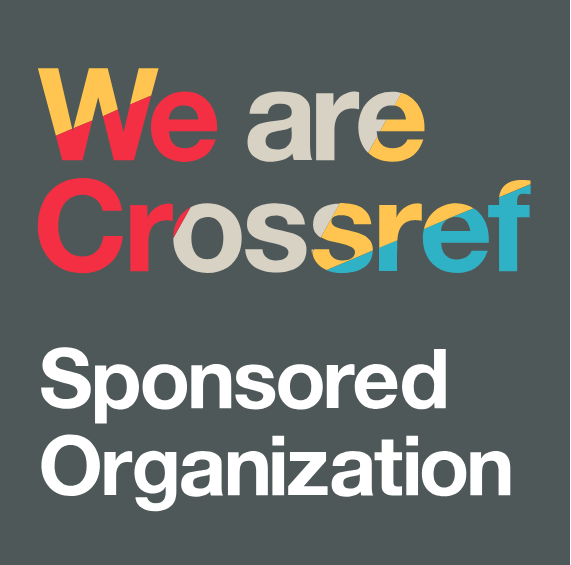Factors Influencing Decisions to Purchase Counterfeit Fashion Products: Brand Image, Price and Lifestyle (Literature Review Customer Behavior)
DOI:
https://doi.org/10.38035/jlph.v1i4.73Keywords:
Brand Image, Lifestyle, Price, Purchase Decision, Counterfeit Fashion ProductsAbstract
Previous research or relevant research is very important in a research or scientific article. Previous research or relevant research serves to strengthen the theory and phenomena of the relationship or influence between variables. This article reviews the factors that influence purchasing decisions for counterfeit fashion products, namely: brand image, price and lifestyle, a literature study of consumer behavior. The purpose of writing this article is to build a hypothesis of the influence between variables to be used in further research. The results of this literature review article are: 1) brand image influences purchasing decisions for counterfeit fashion products; 2) price has an effect on purchasing decisions for counterfeit fashion products; and 3) lifestyle influences purchasing decisions for counterfeit fashion products.
References
Aaker, David. Aaker on Branding: 20 Principles That Drive Success. New York: Morgan James Publishing, 2014.
Ang, Swee Hoon, Peng Sim Cheng, Elison Ai Ching Lim, and Siok Kuan Tambyah. ‘Spot the Difference: Consumer Responses towards Counterfeits’. Journal of Consumer Marketing 18, no. 3 (2001): 219–35. https://doi.org/DOI:10.1108/07363760110392967.
Balgis Hikmah Fitriyamani. ‘PENGARUH CITRA MEREK, KESADARAN NILAI DAN SIKAP TERHADAP PEMALSUAN MEREK MEWAH TERHADAP NIAT MEMBELI PRODUK IMITASI SEPATU CONVERSE DI SURABAYA’. Perbanas, 2015.
Basri, Chatib. ‘Negara Dirugikan Triliunan Rupiah Akibat Pemalsuan’. detiknews.com, 2007. http://detiknews.com/finance/negaradirugikantriliunanrupiah.html.
Bian, Xuemei, and Luiz Moutinho. ‘The Role of Brand Image, Product Involvement, and Knowledge in Explaining Consumer Purchase Behaviour of Counterfeits Direct and Indirect Effects’. European Journal of Marketing 45, no. 1 (2011): 191–216.
Biel, A. L. ‘Converting Image into Equity. Brand Equity and Advertising: Advertising’s Role in Building Strong Brands’ 26, no. 10 (1993): 67–81.
DH, Basu Swastha, and Irawan. Manajemen Pemasaran Modern. Yogyakarta: Liberty, 2005.
Etzel, Michael J, Bruce J. Walker, and William J Stanton. Marketing. New York: McGraw-Hill, 2004.
Gunawan, Imam. Metode Penelitian Kualitatif. Jakarta: Bumi Aksara, 2013.
Hasan, Ali. Marketing. Bandung: Alfabeta, 2008.
Https://ustr.gov/. ‘USTR Releases 2021 Review of Notorious Markets for Counterfeiting and Piracy’. ustr, 2021. https://ustr.gov/about-us/policy-offices/press-office/press-releases/2022/february/ustr-releases-2021-review-notorious-markets-counterfeiting-and-piracy.
Jiang, Ling, and Veronique Cova. ‘Love for Luxury, Preference for Counterfeits –A Qualitative Study in Counterfeit Luxury Consumption in China’. International Journal of Marketing Studies 4, no. 6 (2012): 1–9. https://doi.org/doi:10.5539/ijms.v4n6p1.
K, Anastasia Devi, Hari Susanta N, and Reni Shinta Dewi. ‘PENGARUH CITRA MEREK, HARGA DAN GAYA HIDUP TERHADAP KEPUTUSAN PEMBELIAN PRODUK IMITASI’. Jurnal Ilmu Administrasi Bisnis, 4, no. 1 (2015): 85–94.
Kant, Immanuel. Fundamentación de La Metafísica de Las Costumbres. United Kingdoms: Greenbooks editore, 2021.
Kotler, Philip, and Kevin L Keller. Marketing Management. 13th ed. Jakarta: Erlangga, 2008.
Kunto, Yohanes Sondang, and Peter Remy Pasla. ‘SEGMENTASI GAYA HIDUP PADA MAHASISWA PROGRAM STUDI PEMASARAN UNIVERSITAS KRISTEN PETRA’. JURNAL MANAJEMEN PEMASARAN 1, no. 1 (2006): 13–21.
Lin, Jiun-Sheng Chris, and Pei-Ling Hsieh. ‘The Influence of Technology Readiness on Satisfaction and Behavioral Intentions toward Self-Service Technologies’. Computers in Human Behavior 23, no. 3 (2007): 1597–1615.
Ma’ruf, Hendri. Pemasaran Ritel. Jakarta: PT. Gramedia Pustaka Utama, 2005.
Nayumi, Sellinnia, and Tumpal JR Sitinjak. ‘PENGARUH COUNTRY OF ORIGIN IMAGE, BRAND IMAGE, DAN KUALITAS PRODUK TERHADAP KEPUTUSAN PEMBELIAN PRODUK INNISFREE DI MALL KELAPA GADING JAKARTA UTARA’. Jurnal Manajemen 9, no. 2 (2020): 136–46.
Parker, Christopher J, and Wang Huchen. ‘Examining Hedonic and Utilitarian Motivations for M-Commerce Fashion Retail App Engagement’. Journal of Fashion Marketing and Management; Bradford 20, no. 4 (2016): 487–506. https://doi.org/DOI:10.1108/JFMM-02-2016-0015.
Phau, Ian, and Min Teah. ‘Devil Wears (Counterfeit) Prada: A Study of Antecedents and Outcomes of Attitudes towards Counterfeits of Luxury Brands’. Emerald: Journal of Consumer Marketing 26, no. 1 (2009): 15–27. https://doi.org/DOI 10.1108/07363760910927019.
Prasetyaningsih, Erlita, and Diah Fistiani Sukardiman. ‘Pengaruh Citra Merek Dan Gaya Hidup Terhadap Keputusan Pembelian Produk Tas Branded Tiruan Pada Wanita Karir Di Jakarta’. Jurnal Ilmiah Manajemen Dan Bisnis 1, no. 3 (2015): 10–17.
Pratiwi, Made Suci, I Wayan Suwendra, and Ni Nyoman Yulianthini. ‘Pengaruh Citra Perusahaan, Citra Produk Dan Citra Pemakai Terhadap Keputusan Pembelian Produk Foremost Pada Distro Ruby Soho Di Singaraja’. Jurnal Manajemen Indonesia 2, no. 1 (2014).
Qing, Ping, Antonio Lobo, and Li Chongguang. ‘The Impact of Lifestyle and Ethnocentrism on Consumers’ Purchase Intentions of Fresh Fruit in China’. Journal of Consumer Marketing 29, no. 1 (2009): 43–51. https://doi.org/DOI: 10.1108/07363761211193037.
Sangadji, Etta Mamang, and SOPIAH. ‘Sangadji, E. M., & Sopiah, S. (2013). The Effect of Organizational Culture On Lecturers’ Job Satisfaction and Performance: A Research in Muhammadiyah University throughout East Java. International Journal of Learning & Development, 3(3), 1-18.’ Macrothink Institute: International Journal of Learning & Development 3, no. 3 (2013): 1–18. https://doi.org/https://doi.org/10.5296/ijld.v3i3.3673.
Sutisna. Perilaku Konsumen Dan Komunikasi Pemasaran. Bandung: Remaja Rosdakarya, 2002.
V.Cordell, Victor, Nittaya Wongtada, and Robert L. Kieschnick Jr. ‘Counterfeit Purchase Intentions: Role of Lawfulness Attitudes and Product Traits as Determinants’. Journal of Business Research 35, no. 1 (1996): 41–53. https://doi.org/https://doi.org/10.1016/0148-2963(95)00009-7.
Waseso, Ratih. ‘Kerugian Ekonomi Indonesia Karena Produk Palsu Capai Rp 291 Triliun Pada 2020’. kontan.co.id, 2022. https://nasional.kontan.co.id/news/kerugian-ekonomi-indonesia-karena-produk-palsu-capai-rp-291-triliun-pada-2020.
Downloads
Published
How to Cite
Issue
Section
License
Copyright (c) 2021 Wawan Novianto, Ali Marzuki Zebua, Mursal

This work is licensed under a Creative Commons Attribution 4.0 International License.
Authors who publish their manuscripts in this journal agree to the following conditions:
- The copyright on each article belongs to the author(s).
- The author acknowledges that the Journal of Law, Poliitic and Humanities (JLPH) has the right to be the first to publish with a Creative Commons Attribution 4.0 International license (Attribution 4.0 International (CC BY 4.0).
- Authors can submit articles separately, arrange for the non-exclusive distribution of manuscripts that have been published in this journal into other versions (e.g., sent to the author's institutional repository, publication into books, etc.), by acknowledging that the manuscript has been published for the first time in the Journal of Law, Poliitic and Humanities (JLPH).


























